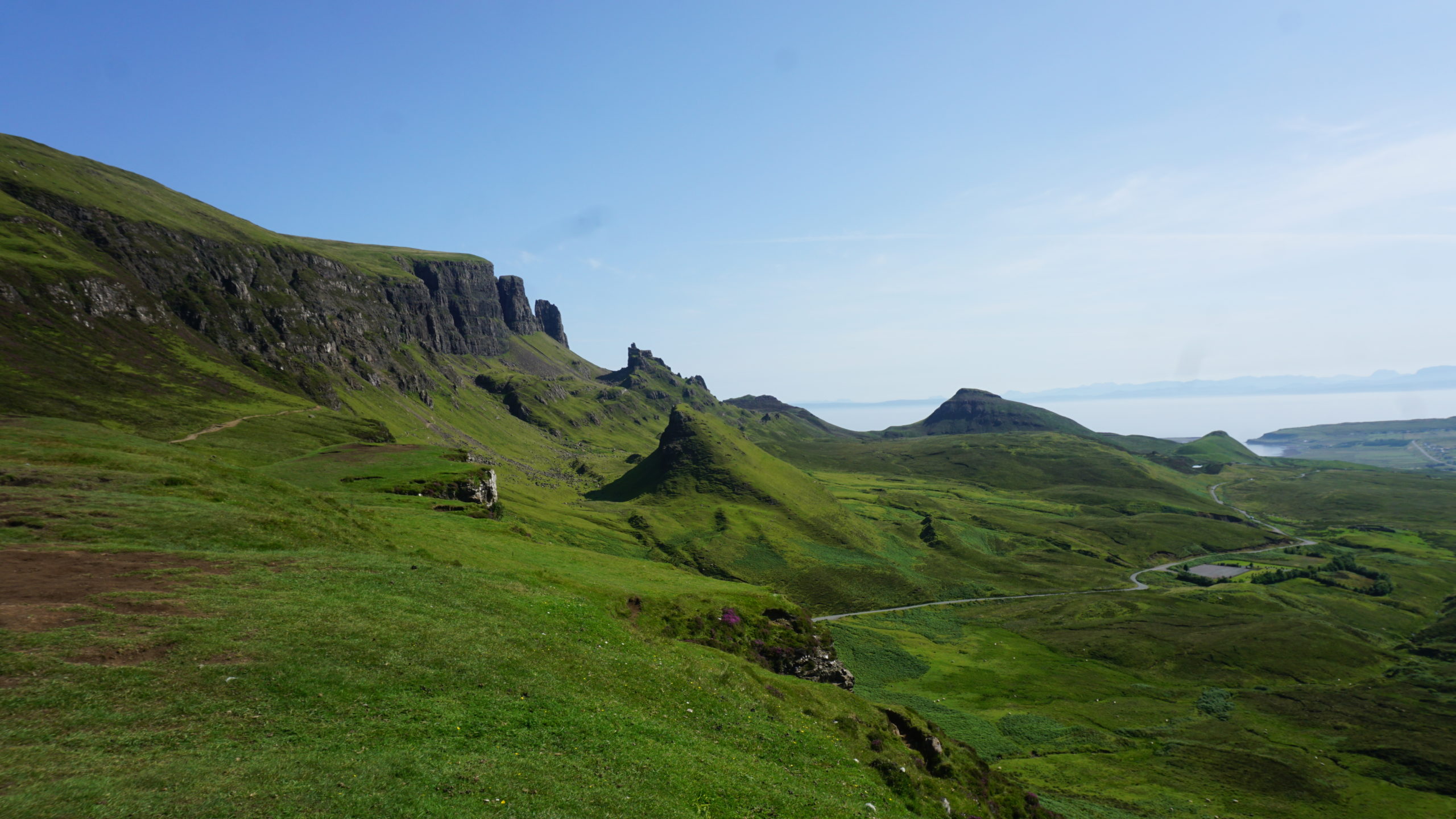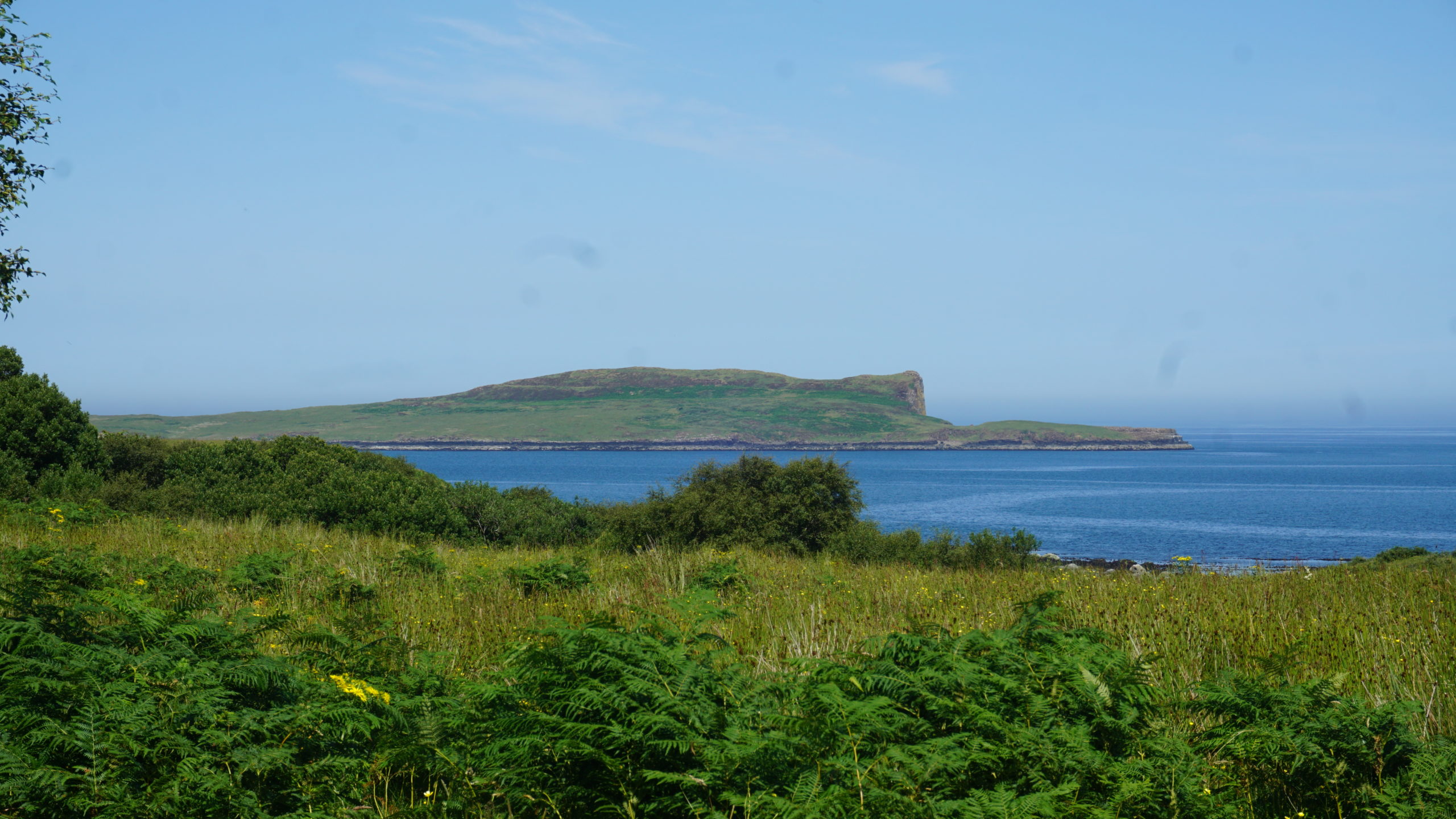
Staffin Dinosaur Museum
“The Staffin Dinosaur Museum was established by Dugald Ross in 1976 when he was only a teenager. The species he identified in the area include Stegosaurus, Megalosaurus, Cetiosaurus, Hadrosaurus, and Ceolophysis. You’ll get the first hand account from the man who discovered all of the fossils in the museum.” – staffindinosaurmuseum.com
See some of the rarest dinosaur footprint fossils in the world and discover the “Dinosaur Capital of Scotland” as well as learning about the changes in Crofting over the centuries.
Druim nan Linntean – Ridge of Ages
The Skye Ecomuseum, also known by its Gaelic name “Druim nan Linntean” (the Ridge of Ages), is the first Ecomuseum in Scotland – a museum without walls or roof. It was established in 2008 by the Staffin Community Trust (SCT).
Staffin is a district situated in the northeast of the Isle of Skye, owning a resident population of more than 500 people. It is an area with a wild range of top-tier heritage and environmental designations that has an international reputation for geology, palaeontology, and cultural heritage. The SCT established the Skye Ecomuseum to bring all these aspects of this community to life through the stories and experiences of the people of Staffin, managing and interpreting it for an ever-increasing number of visitors. The Ecomuseum aims to preserve the fragile natural environment of the Isle of Skye, as well as improving the economic prospect of the local community.
All the exhibits of the Ecomuseum locate in the environment and require a short walk to discover their stories. The spectacular coastal cliffs, grassy platforms and lochs of Staffin provide the setting for the exhibits which are themselves features of the landscape across 13 locations. The famous landmarks and natural heritages of the Isle of Skye includes the Cuith-raing (Quiraing), An Stòrr (Old Man of Storr) and Kilt Rock. The Skye Ecomuseum presents stories of the past, use of the land, local flora and fauna, encouraging visitors to explore its hidden waterfalls, dinosaur footprints and traditional ways of life.
See : skyeecomuseum.com for more information

The Quiraing
“Cuith-raing, generally spelt as Quiraing, is a spectacular landscape that is best visited by taking the time to explore on foot over a few hours.
It is made up of towers, needles and plateaus and is a truly memorable place to explore.
Its best-known features are Am Prìosan, the prison, a hollow beneath a rocky pyramid which looks like a medieval castle, An t-Snàthad, a 37-metre pinnacle, and Am Bòird, or the table, a hidden flat grassy area. Cuith-raing is not the summit of any specific part but describes this collection of features in the northern part of the landslip along the Trotternish ridge.
Cuith-raing is often described as the most active part of the landslide that continues south to the equally famous landmark of the Old Man of Storr.” – skyeecomuseum.com

Loch Shainta
Loch Shianta is another site of the “Druim nan Linntean” (the Ridge of Ages), it is a very precious place. One feature of this area is a hidden holy well. Holy wells were very important in medieval times. Tobar Loch Shianta was considered the most celebrated healing well in Skye.
Pick a quiet time to visit as we hope that only a precious few will take the opportunity to visit this amazing site.
We want this to remain a hidden gem.
